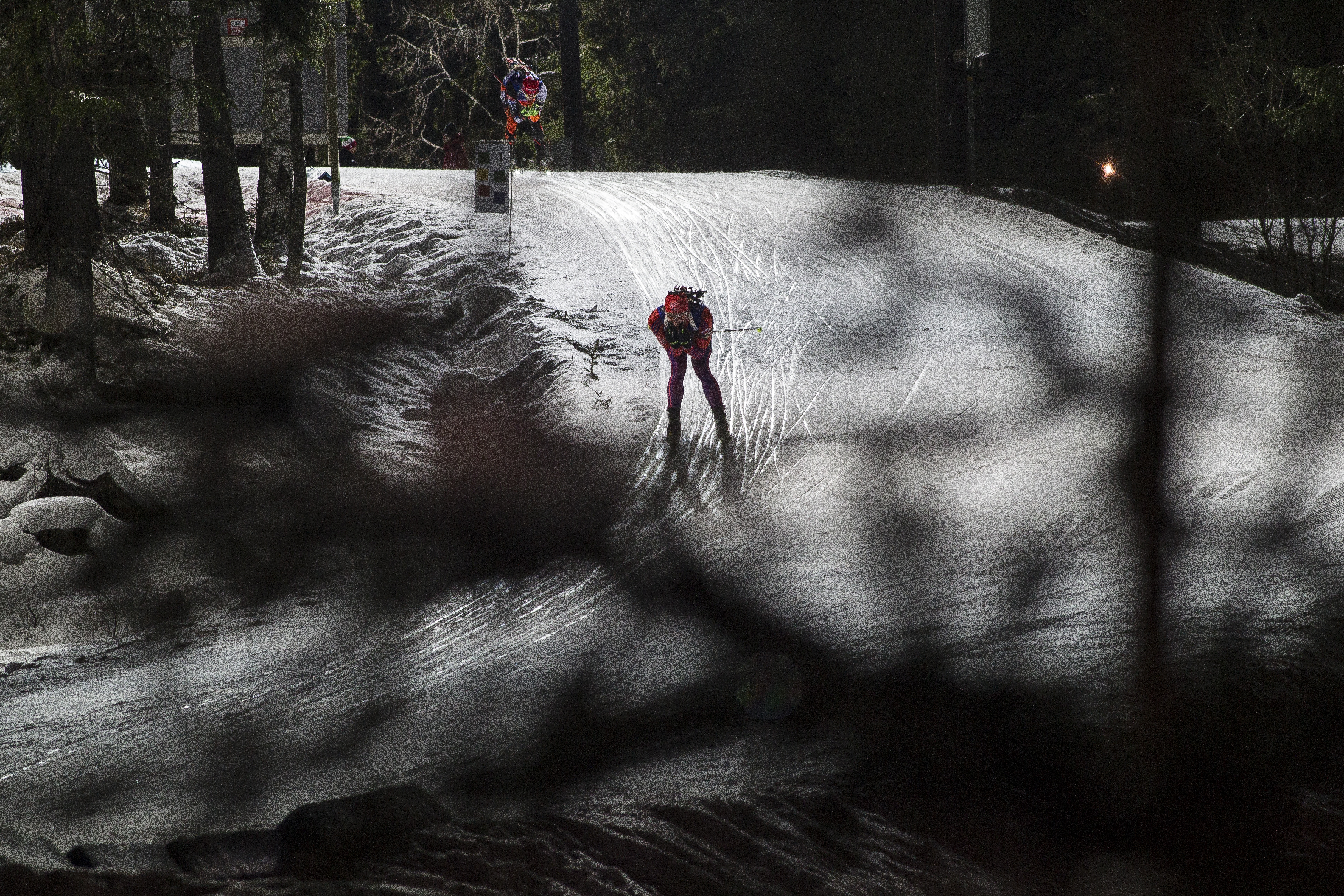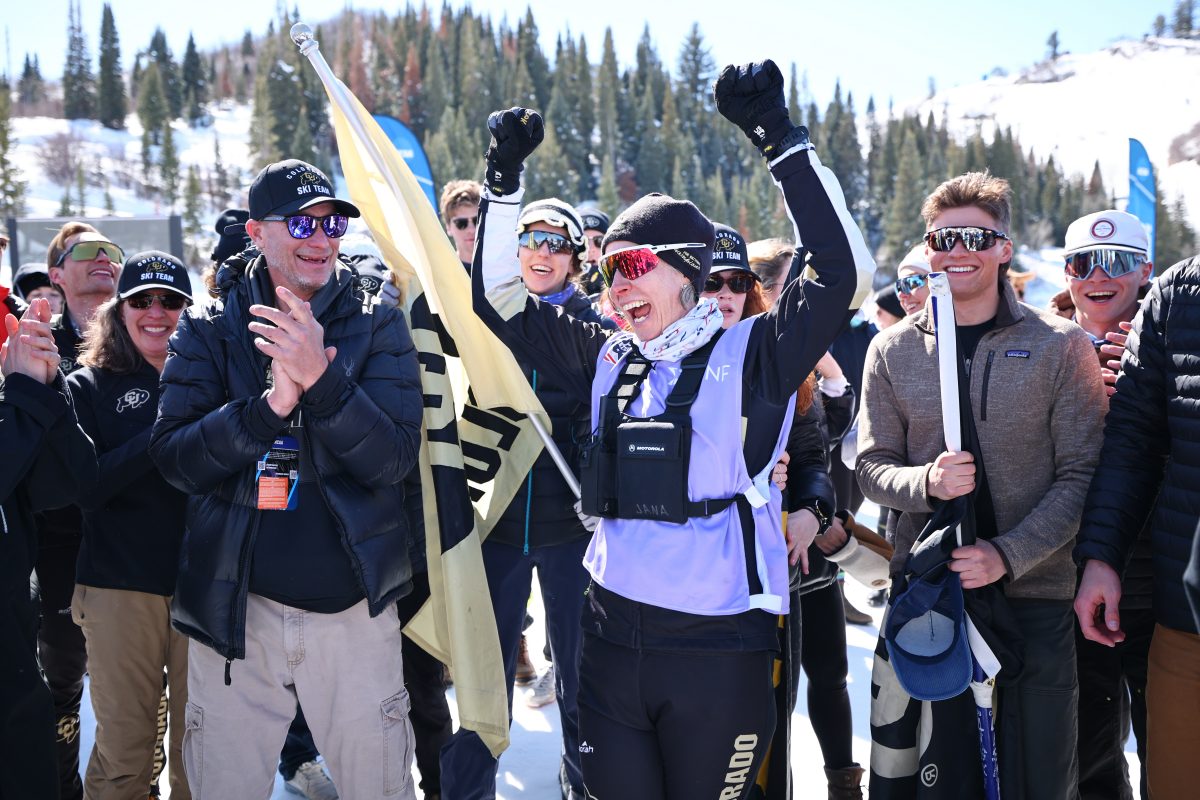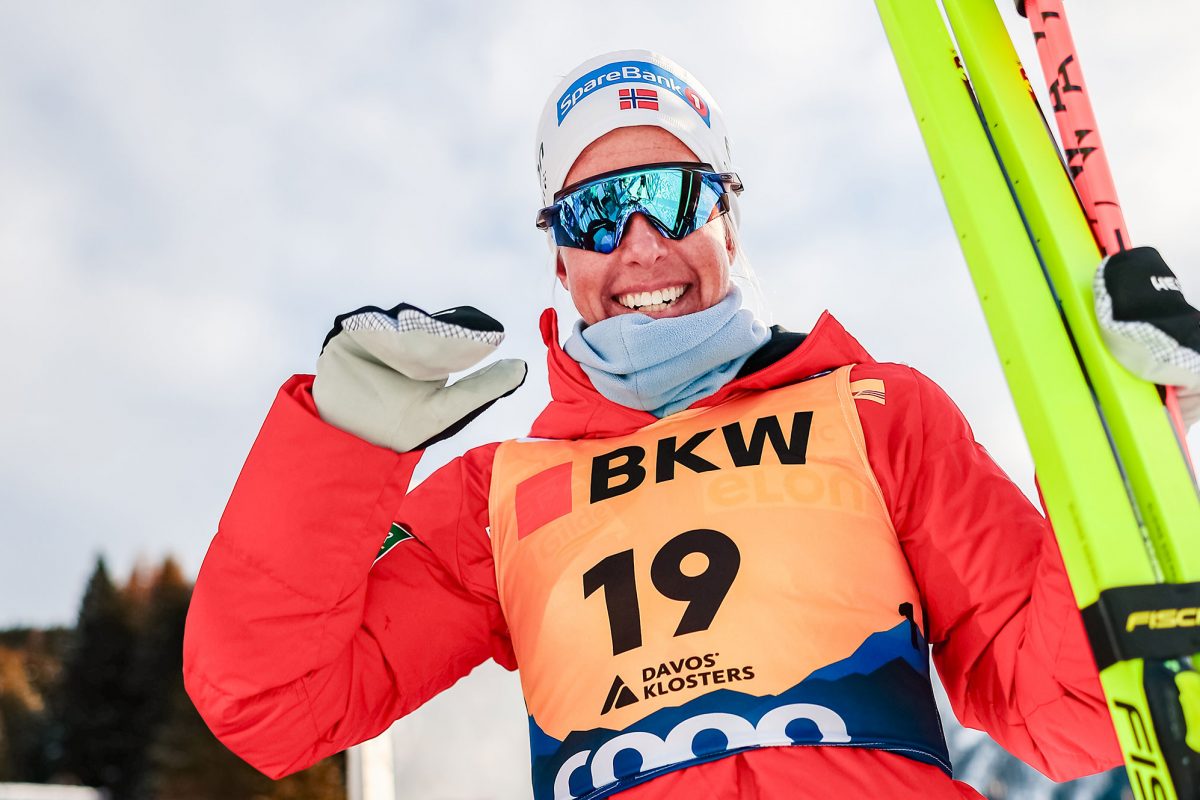
You’re forgiven if you didn’t see this one coming: at Wednesday’s World Cup 20 k individual race in Östersund, Sweden, the top North American performance came from Sean Doherty.
The 20-year-old American has a strong set of credentials, having won three World Youth Championships titles, attended the 2014 Olympics and 2015 senior World Championships, and earned a bronze medal at World Junior Championships last season.
But even Doherty didn’t totally expect his breakthrough in the first individual race of the World Cup season: 17th place (+3:13.4 from winner Ole Einar Bjørndalen of Norway) with two penalties in the 20-target race.
“It’s a huge confirmation of the all the work I put in over the summer,” Doherty said. “I’m real happy with it.”
His previous best on the World Cup had been 45th-place finishes in pursuits in Kontiolahti, Finland, and Nove Mesto, Czech Republic, last season – just outside the World Cup points.
When the U.S. team started off this season with grand prix races in Sjusjøen, Norway, Doherty placed 29th in the sprint.

“I was optimistic,” the New Hampshire native said. “But I wasn’t expecting this. I was happy with how I felt in Norway, but that was in no way leading me to believe I could just pull a top 20 today. It was pretty surprising in a way.”
Others, though, expected plenty of success for Doherty this season.
“Psyched to see Sean have such a good finish,” teammate Lowell Bailey, who finished a few spots behind him in 24th, wrote in an email. “I did expect him to have a breakthrough this season. He’s been right there in training throughout the season and I think he will continue to show top results throughout the season. This is by far the strongest men’s team we’ve ever had. It’s exciting to be a part of it.”
While he has done a few 20 k competitions in the past, he also wouldn’t have guessed that his breakthrough would come in the format, which assigns a one-minute penalty for each missed shot instead of sending skiers to a penalty loop, which usually takes between 20 and 25 seconds.
“Typically, the individual is not my strongest race,” Doherty said. “I’m not a bad shooter, but it is truly a precise shooter’s event with a stiff penalty. It’s not something I would expect to be my best. I guess now it is a good one for me!”
The range in Östersund is often windy, and Doherty said his shooting “just kind of came together.”
“Luckily I had a good zero prone, and I was confident that I knew how to react to the changing conditions if need be,” he explained. “For standing, I shot on point 30 all the way at the end of the range, which might be slightly sheltered by a building nearby. Maybe putting that together allowed me to have just a little extra help in these windy conditions.”

Although he was one of the latest starters, Doherty didn’t get many splits during his race – he said he didn’t need them. Only on the last lap did his team begin telling him just how well he was doing.
So Doherty put his head down and accelerated, skiing his fastest loop of the day for the 38th-fastest course time in the field.
“You have to,” he said of the effort, which left him completely depleted at the finish. “Everybody’s cheering their hearts out for me and I’m in a good position. It’s all about the seconds. I ended up only 0.2 seconds in front of 18th place. So every little bit you can find matters. You just have to dig at the end of that long race.”
Luckily, the late-starting position didn’t hurt his chances as it sometimes does.
“The course conditions here were very, very good, and they stayed very consistent throughout the race,” Doherty said. “Being a late bib didn’t have much of an effect. Sometimes you get a late bib and it starts snowing on you or something, and it really kind of stinks.”
Doherty will stick with the World Cup until Christmas, and then his plans are up in the air. He plans to compete at one last Junior World Championships in Cheile Gradistei, Romania, at the end of January. How he prepares is somewhat undecided.
“The racing’s the same,” Doherty said of an event he’s competed at many times. “The distances are the same. It’s just against a different crowd. But it’s still a really high level – the junior men’s field is really strong. The thing that changes the most is that the World Cup is the big show and the Junior Worlds is a little more low key in comparison. It’s a different environment, and it’s fun. Being on the team with other younger guys and people who are just getting into it. I like both circuits and it’s fun to bounce back and forth a bit.”
If this opening competition is any indication, he has made a jump in performance level since last season.
“I had really solid results last season individually, and I was part of some good relays, which was cool,” Doherty said. “I’m just really glad to step things up for this year. It’s really encouraging to open on such a strong note.”
Also for the U.S., Bailey finished 24th, also with two penalties (+3:44.1). Tim Burke raced to 37th with three penalties (+4:36.6), while Leif Nordgren had a tough day in prone and finished 104th with 13 penalties.
“It’s always a tough start to the season to lead off with this particular Individual course, but it also helps you get into the right mindset going forward,” Bailey wrote. “I was happy with the result given the tricky conditions on the range. I had a split bullet on my last shot… sometimes there’s no explanation for a bad shot. The only thing I can say is that it’s pretty hard to clean a four stage race.”
The Canadian team was led by Nathan Smith in 27th. Smith, who on Sunday had teamed up with Rosanna Crawford to place second in the World Cup single mixed relay, missed four shots and finished 3:51.9 behind the winner.
“Shooting was a little disappointing today,” Smith wrote in an email. “Conditions weren’t perfect but also not horrendous. To be in the game you have to hit at least 18, maybe even more if it’s especially good shooting conditions. I felt like my shooting was there, but just couldn’t quite knock down all five on any of my trips to the range. Other than not quite clicking for the wind enough on my first prone I can’t really think of any mistakes. I felt calm and under control throughout the race.”
Christian Gow placed 62nd (+6:20.6), Brendan Green 77th (+7:51.0), Macx Davies 85th (+9:10.5), and Scott Gow 86th (+9:25.0) for Canada.
“I know it’s not possible to have a best-day ever every day,” Smith wrote. “Despite feeling pretty average on skis I actually turned in a solid ski performance. I’m excited to see my result on a top notch day. I’m not going to change course yet in shooting training. The fundamentals are there and I just need to be patient.”
Chelsea Little
Chelsea Little is FasterSkier's Editor-At-Large. A former racer at Ford Sayre, Dartmouth College and the Craftsbury Green Racing Project, she is a PhD candidate in aquatic ecology in the @Altermatt_lab at Eawag, the Swiss Federal Institute of Aquatic Science and Technology in Zurich, Switzerland. You can follow her on twitter @ChelskiLittle.



